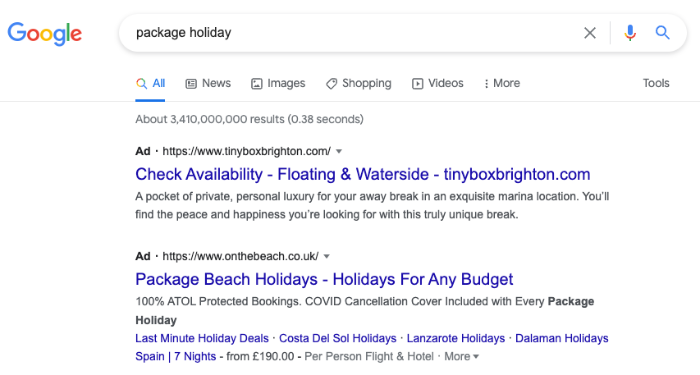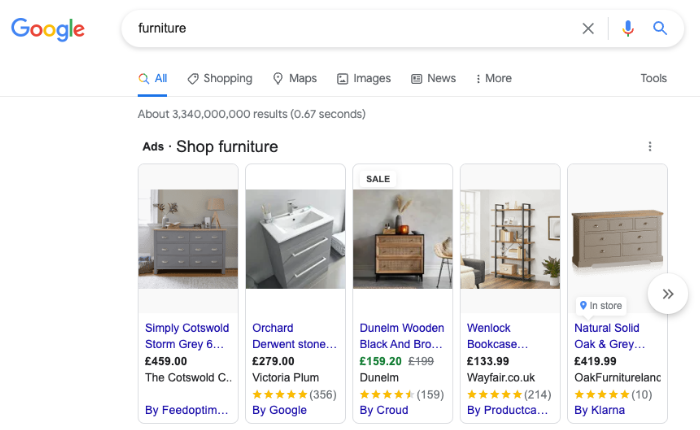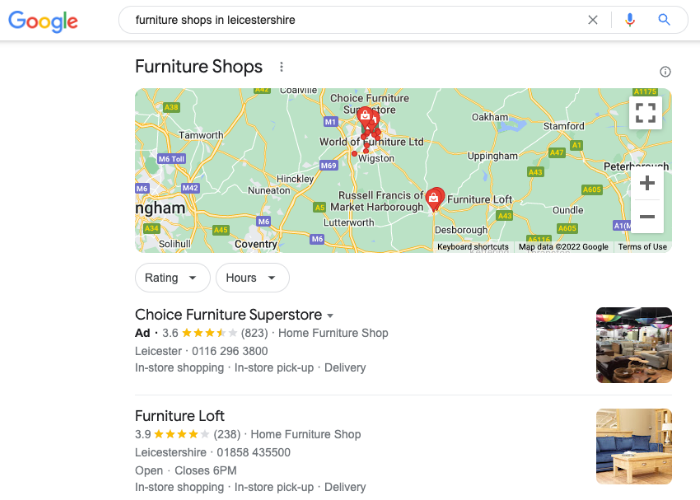
Google Ads are beneficial to businesses of any size or industry to advertise to people at the exact point they are looking for what your business offers. However if it isn’t a marketing tool you have used before then this blog post will help.
We will look at what Google Ads are and how Google Ads work, to help demonstrate how they can increase leads and conversions for your business.
Below we also explain where Google Ads are shown and how the ad auction works. First lets look at the history of Google Ads and what they are.
Ben Webster
Creative director at 1PCS. Addicted to design, SEO, pizza and helping companies big and small succeed online.
Share This Article
Subscribe for updates
What are Google Ads?
Google Ads first launched in 2000 and at that point were known as Google Adwords, however in 2018 were rebranded to Google Ads.
Popularity with advertisers has increased year on year, with a recent study showing 80% of businesses choose to focus on Google Ads as their preferred channel for digital advertising campaigns. With it reported that Google Ads results achieve 65% of clicks for paid keywords in search results, versus 35% for organic results. It is clear to see why.
Google Ads were created to allow businesses to advertise directly to people with the right search intent for your business. Google Ad campaigns are a referred to as a pay-per-click advertising model on the online advertising platform.
Lets look at an example for context, if your business is based in Leicestershire and you are an electrician. You can advertise through Google Ads to bid for the relevant keywords for example ‘Electrician in Leicestershire’ or ‘Electrical rewire’.
If a user goes onto click your paid ad then you would only pay Google at that point. Don’t worry, Google Ads costs are really easy to monitor with daily budget caps for your bid costs so you will never overspent on your planned marketing budget for the Google Ad Campaign.
Where are Google Ads shown?
There are two types of Google Ads, the first is the Search Network and the second is the Display Network.
Display advertising is where you are used to seeing video ads, image ads, app ads or banner ads which you will have seen on channels and third party websites within the Google display network, such as YouTube.
For the purpose of this blog we will be focusing on Search Advertising. Below we look further at where you would typically see Google Ads within the search network.
Text Ads
Firstly text ads are featured usually as the first 3-4 links on the search engine results page. These are shown above the organic search results.
The only difference in appearance for a user to distinguish that they are being shown an ad placement, is the word ‘Ad’ shown in bold top left. For popular keywords there are also 3-4 ads shown at the bottom of the first search result page.

Google Shopping Ads
If you have an online business or have direct products to sell on your website, Google Shopping Ads are impactful online advertising as they include the added element of featuring a product visual too.
Each Google Ad features the product image along with product description, ad copy and price. These paid ads feature within the search results pages and also in Google Shopping itself too.

Google Maps
When planning your Google Ads campaigns you can decide the location for your target audience, which be as far wide as the globe right down to your local town and city.
This can be particularly useful for companies with physical stores, for example when searching ‘Furniture Shops’. Google Ads can be shown within the Google Maps result shown on the first search results page as shown here.

Why advertise on Google Ads rather than other search engines?
Perhaps when considering a Google Ads campaign you have wondered if this will limit your opportunity to increase your sales, as Google isn’t the only search engine for delivering search engine marketing.
Whilst that is correct, Google by far dominate the search engine market, with 91.9% market share! Daily this equates to over 8.5 Billion searches. So it is safe to say it is by far the most popular search network when it comes to digital advertising.
How does Google Ads work?
Time to get into the nitty gritty of how Google Ads works. We touched on this earlier that Google Ads campaigns are based on paying for your advert to appear when users are searching for your relevant keywords or search term.
For popular searches you could have multiple businesses competing for the same keyword search, for only a number of ad placements. Therefore advertisers bid for their target keywords, Google then takes into consideration the maximum bid companies are happy to pay for that keyword. The cost per keyword will vary, with factors such as how often people search for that keyword and how competitive it is for the ad placement.
It is worthwhile doing your keyword research to understand how often people search for your search terms and to know the likely bid amounts for your target keywords. This will help to give you the knowledge of how competitive certain keywords are.
You may find that an exact match could be the most popular, however with the right research you can also identify broader terms that users search, that could also perform well and give a good return on investment for your ad spend.
Control your Ad Spend
A fantastic part of Google Ads is that you can set a daily budget for your ad campaign. Therefore you don’t have to worry about using Google Ads about exceeding your ad spend.
Google Ads is not as simple as being the advertiser with the biggest marketing spend. Having bidding strategies that only focus on having a high bid cost won’t guarantee the top positioning in the paid search.
Google Ads are perfect for businesses of any size, not just big players such as Amazon.

You are fully in control of how much you want to bid in the ad auction
Quality Score
Google wants to ensure that users have a positive experience, therefore they reward companies who deliver a good user experience. They do this by giving each advert a quality score.
Google definition: “Quality score is an estimate of the quality of your ads, keywords, and landing pages. Higher quality ads can lead to lower prices and better ad positioning.”
To delve into this a little deeper, Google gives a quality score of 1 to 10, with the higher the score, the better. They decide this score by looking various factors which includes, the relevance of your actual ad in regard to the search query the Google user has entered.
Google looks at the past performance of your Google Ad in comparison to competitors to identify the expected click through rate. They also rate how the user experience will be which includes the relevance of your landing page.
Ad Rank
The quality score your Google Ads are given is then multiplied against the maximum bid you are happy to pay for the keyword. This creates your Ad Rank.
The Ad Rank received is important as the higher the Ad Rank the better your Google Ads will position. This score will differ between different keywords, as the bid cost differs for each keyword.
As you can see the Ad Rank isn’t purely based on having the highest spend, it is combined with the quality score. It favours companies which have a higher quality score ahead of lower quality scores. Therefore you can avoid wasted ad spend and reduce the cost per click to improve the return on investment from your ad spend.
In fact, when delivered successfully it is typical for businesses from Google Ad Campaigns to see a 3-10x return on their investment.
Testing and Optimisation
An important part to achieve the ultimate Google Ads success is to look at the statistics and conversion data within your Google Ads account to ensure you are continuously analysing how the multiple ads are performing for your search queries to further test and optimise your Google Ads.
With Google search ads it is to always the aim to have the strongest quality score possible to keep the cost per click as low as possible, so you can convert more leads and sales from your ad spend.
Ways of optimising your Google Ads include reviewing your ad copy and testing to see which performs the best for users clicking through to your web pages and online store. Another avenue is to do remarketing with Google Ads retargeting.
This is an ad group which targets your advert towards users who have previously interacted with adverts, but have not yet converted to your end goal for example, making a purchase or signing up to your newsletter.
Investing the time in testing and optimisation is worthwhile to maximise your ad spend.
Want to know more?
Whether you are new to considering Google Ads or re-evaluating your existing campaign, we can help. At 1PCS Creative we are a Google Partner, which ensures we are always up to date with any changes, updates or new information relating to Google Ads.
It gives our clients reassurance that our team are delivering campaigns to the highest standard. Importantly giving them the best return on investment so each £ is spent wisely! Feel free to get in touch with one of the team who would be happy to discuss further with you.

